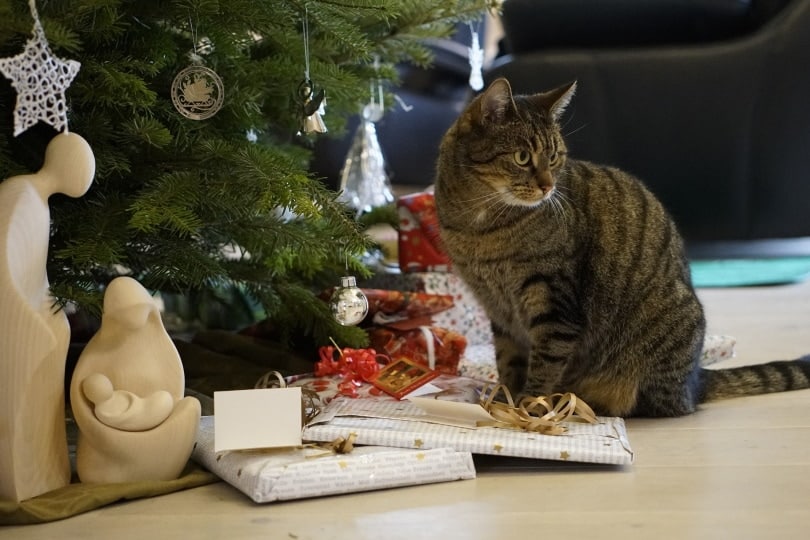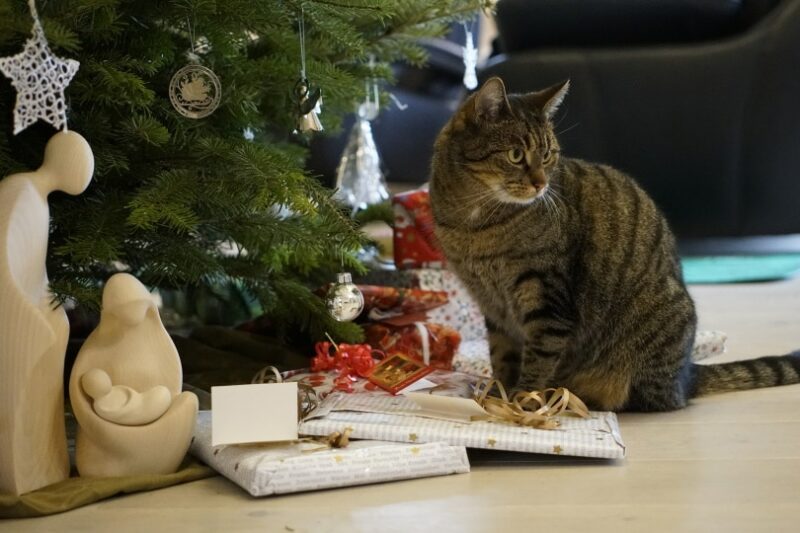According to the National Christmas Tree Association, Americans buy up to 30 million real trees annually for the holiday. Canada and every state in the U.S. grows them. If you’re one of the 45.3 million households with a cat in the home, you’re likely aware of the dilemma of having the two together in the same house. People often associate cats with Christmas trees.
There’s the stereotypical image of a fireman positioning a ladder next to a tree with a crying child waiting for him to rescue his pet. However, what’s driving this urge in our feline companions with these arboreal jaunts?

The 7 Likely Reasons Why Cats Like Christmas Trees
1. Outdoor Smells
Even if your cat doesn’t go outside, your real Christmas tree is going to attract some attention because it smells like the outdoors. The mere fact that it’s something new is enough to stir curiosity in the most indifferent feline. It’s instinctive. Remember that your kitty has a keen sense of smell. That’s their main way of exploring their world.
Of course, there also is all the excitement surrounding the tree. The kids are probably running around and anxious to start decorating it. How could your cat not get caught up in the moment? Besides, your pet may like the smell of the new Christmas tree as much as you do.
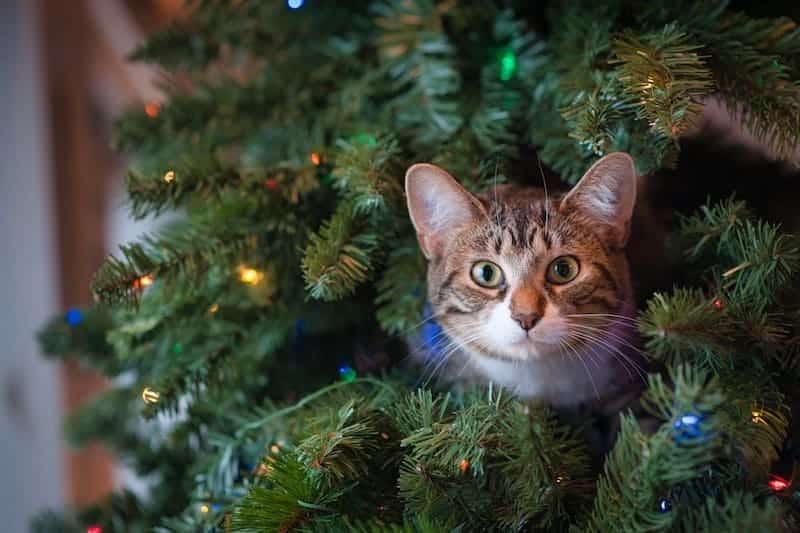
2. Height Advantage
If you have a cat, you know that sooner or later, they’re going to find the tallest bookcase or cabinet in the house. After all, your pet can jump up to 6 feet high. The Christmas tree is just another challenge to meet and conquer in their feline brain. Cats do it to give them a competitive edge when hunting. It gives them a bird’s-eye view of the world around them. Leopards and other carnivores store their prey in trees.
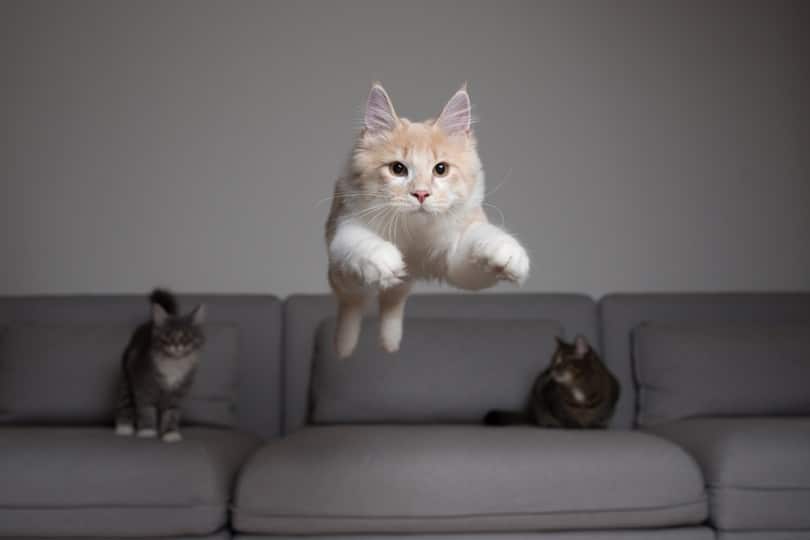
3. Marking Their Territory
If your cat is scratching your Christmas tree, they’re likely marking their territory. Many animals use signs like this one to let others of their same species know that a place is already claimed. It cuts down on physically fighting over it, an evolutionary advantage for both sides. It’s instinctive behavior, even if it’s probably the worst place for your pet to start showing their might.
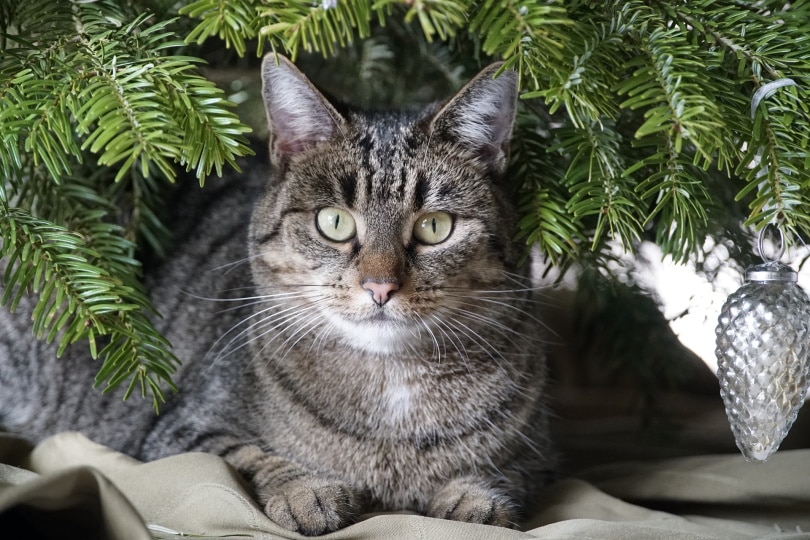
4. A New Hiding Place
One of the most desirable traits of the ideal Christmas tree is one that is full and not scraggly looking. Your cat thinks so, too. Felines like to hide. Again, it gives them an edge when hunting so they can ambush unsuspecting prey or another pet in the household. To your kitty, it isn’t a Christmas tree—it’s a new place to take cover. Think of your cat as a wild animal, although a smidge tamer.
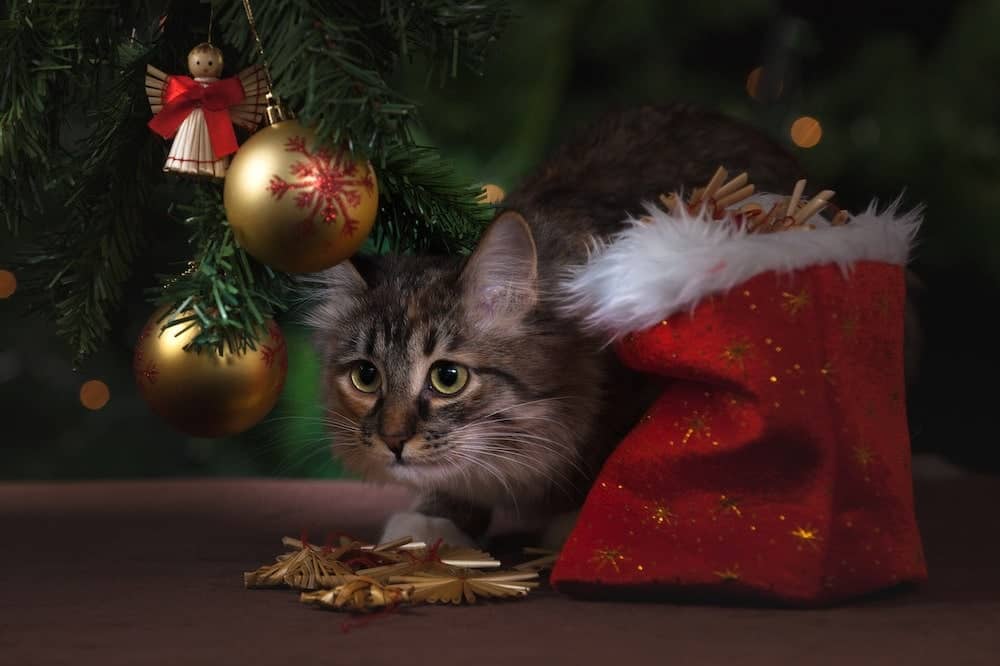
5. Claw Conditioning
Contrary to popular belief, a cat scratching on a tree isn’t sharpening their claws like a file. Instead, they’re trying to remove the sheath around them to keep them in good, fighting shape. A Christmas tree with its rough bark just happens to provide an ideal surface to do it. It probably serves this purpose along with one or more of the others we’ve discussed.
6. Stretching
What’s the first thing you notice your cat do after they wake up from their fourth nap of the day? They stretch, not unlike you do. Since the carpets and furniture are off-limits, they try to do the same thing on whatever else they can find, namely, the Christmas tree. And they probably scratch the tree a few times while doing it. However, cats often go back to the same places to do it, making stopping it a wise plan.
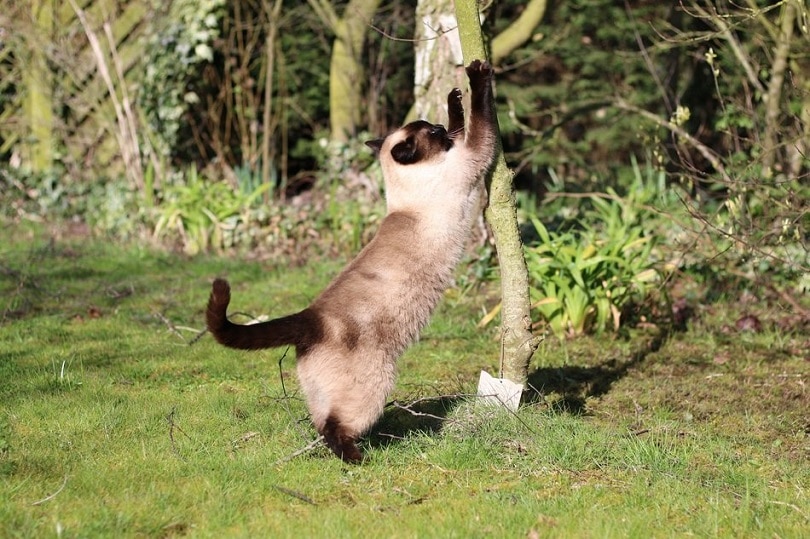
7. The Inner Kitten
Within every cat is an inner kitten, waiting for the next toy to pounce on to roll around the floor. It isn’t a Christmas tree to them. It’s another thing with which to play. There’s this cool post to climb and scratch now. There are also all those shiny objects and flashing lights catching their eye. People call felines curious for a good reason. The tree is something else to explore. We dare you to say that it isn’t cute, either.
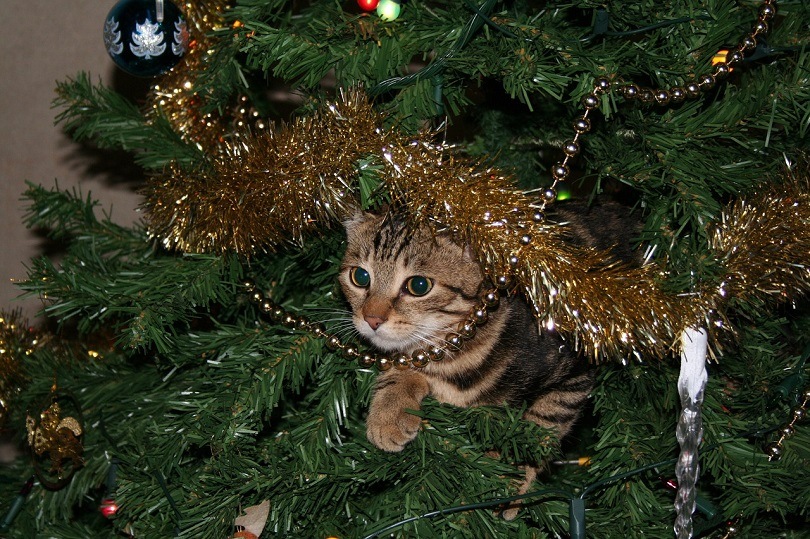
Tips to Keep Your Cat Away from the Christmas Tree
We understand that just because instinct and curiosity have sparked interest in the Christmas tree, it’s not another cat toy. Remember that Christmas trees have a lot of things on it that could hurt your pet, including live wires, sharp needles, and glass shards if something were to break. Keeping your kitty away from and out of the Christmas tree is for their safety.
It could be simply putting up your tree somewhere your cat is not allowed to visit, even if just temporarily. You could opt for a smaller tree or an artificial one, although your kitty is still likely to be curious about it. Sometimes, you have to take it to the next level with a deterrent, such as a pressure-sensitive mat near the tree. The chances are a one-time encounter will suffice.
We’d be remiss if we didn’t mention two other words of caution for cat owners. We strongly urge you not to put tinsel on your tree, no matter how pretty it looks. Unfortunately, felines often find it irresistible, too—literally! Second, make sure to cover the tree water. Undoubtedly, you’re putting something in it to keep it green and lush. It’s probably something your pet shouldn’t drink.

Conclusion
We understand your frustration with a cat obsessed with a Christmas tree. We hope knowing the reasons behind this unwanted behavior will make it easier to manage the issue. Of course, the best solution is prevention. If it’s possible to put the tree in an off-limits room, you’ll save yourself a lot of problems. The curious cat can’t help themself.
Featured Image Credit: jhenning, Pixabay

